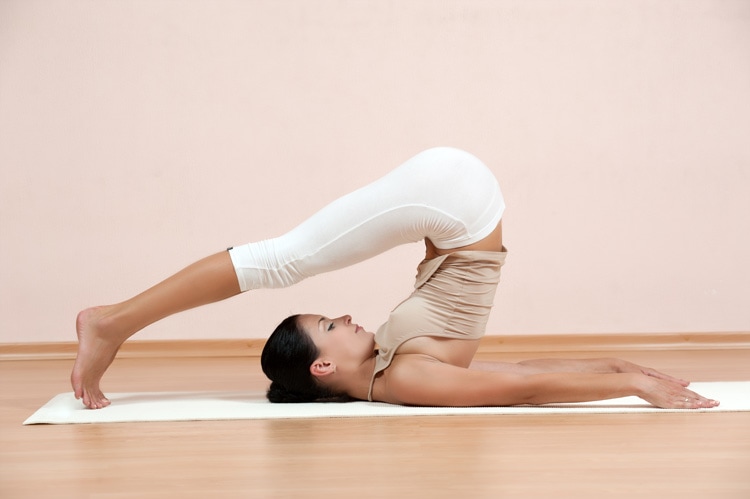Sequencing is a vast subject and has so many facets. When we begin to think about the structure of our at-home yoga practices, even the most seasoned yoga teacher can freeze.
The depth of your sequence will refine as you get a working knowledge of anatomy, your body and needs, and effective sequencing of yoga postures.
Use the S.E.L.F. sequencing strategy as a guideline for your home yoga practice:
Symmetry
The number one benefit of a home yoga practice from a physical perspective is symmetry. Many wonderful things happens when we go to a group classes – we increase our strength and flexibility, we create a relationship with ourselves and begin to open to ideas of relaxation.
We seek spiritual insights, and work to find harmony in our mind and body, plus we are inspired and encouraged to do things on our mat that we may not attempt on our own. But, we don’t always leave feeling symmetrical.
Traditionally, you hold a pose for x amount of breaths on each side. Makes complete sense, right? Well, you may leave class feeling more flexible and strong overall but you're not working towards feeling any more symmetrical. Your right tight shoulder from collegiate swimming? You’ve increased the range of motion, but not in comparison to your already more open left shoulder. The same goes for that hip surgery you had in ‘96, the pulled hamstring you’ve been nursing, and the myriad of other points of dissymmetry in your body.
S: Use the S in the SELF sequencing model to work on a sequence that is truly symmetrical. Start on the tighter side first, linger in the pose longer, and get clear about where you are lacking symmetry and what poses will work you towards balance.
Elements
A foundational yoga sequence ties together key elements of bodily movements and targets all of the range of motion in your physical body. Your hips can only move in so many directions, but it’s imperative that they do in fact move in all directions.
Imagine a yoga sequence where you do all forward folding and never any back bending. Imagine a yoga sequence where it's all just seated postures. Now imagine a sequence where you move your body in all directions and mobilities—total bliss.
E: Get clear on the ROM of the body and then begin to focus in on the postures that line up with these fundamental movements. Sequencing in this way is both intelligent and highly transformative. Also, spend time examining the yoga posture families (backbends, inversions, forward folds) and the poses that fall into these categories and what the key ROM is. Your most frequented sequence should target all ROMs and hit all of the posture families.
Layer
A great yoga sequence can be distilled down to its most fundamental components so that it’s highly effective yet not lengthy. Some yogis want hours on the mat each day, but sometimes we need a yoga practice that is highly targeted for what we need, and within the restrictions that arise from living abundant lives.
Know how and when to layer on additional postures and cut back where it's appropriate to get a more refined breakout sequence. This will give you freedom when you need it, while still reaping the benefits of a yoga practice.
L: As you combine symmetry and elements, the layer component of your practice will naturally unfold. Begin to look at your practice as a larger, longer sequence with multiple layers that you can peel back on days where energy or time is waning. Think of breakout sequences or layers of your practice as the fast food (or more accurately, the Whole Foods hot bar) version of your yoga practice—it’s great to have the option, but you don’t want your diet or practice to sustain solely off of this component.
Focus
An ideal sequence works towards symmetry and contains all of the essential elements of the practice. Occasionally, a practice needs to be distilled (see Layers) or deconstructed a bit to focus on a certain characteristic, quality, or anatomical region.
As you highlight parts of your body that need symmetry work, you may organically find that certain body parts need extra focus so you can work through injury or chronic over/underuse.
You may also occasionally gravitate towards a sequence that feels more restorative in nature, or one that aides you in sleeping. Although Focus sequences aren’t the lifeblood of your practice, they can be essential in breaking through barriers in the body and mind, and can keep your practice fresh.
F: Make notes of the parts of your practice that warrant extra attention. As you practice, tap into the parts of your practice that uplift you and leave you feeling depleted. Check in with your physicality to notice the parts of your body that can use some extra focus and commit to developing this time through a Focus.
Hopefully this S.E.L.F. sequencing helps out all of you who are just getting into a regular home practice. How do YOU sequence your poses when you practice at home?


